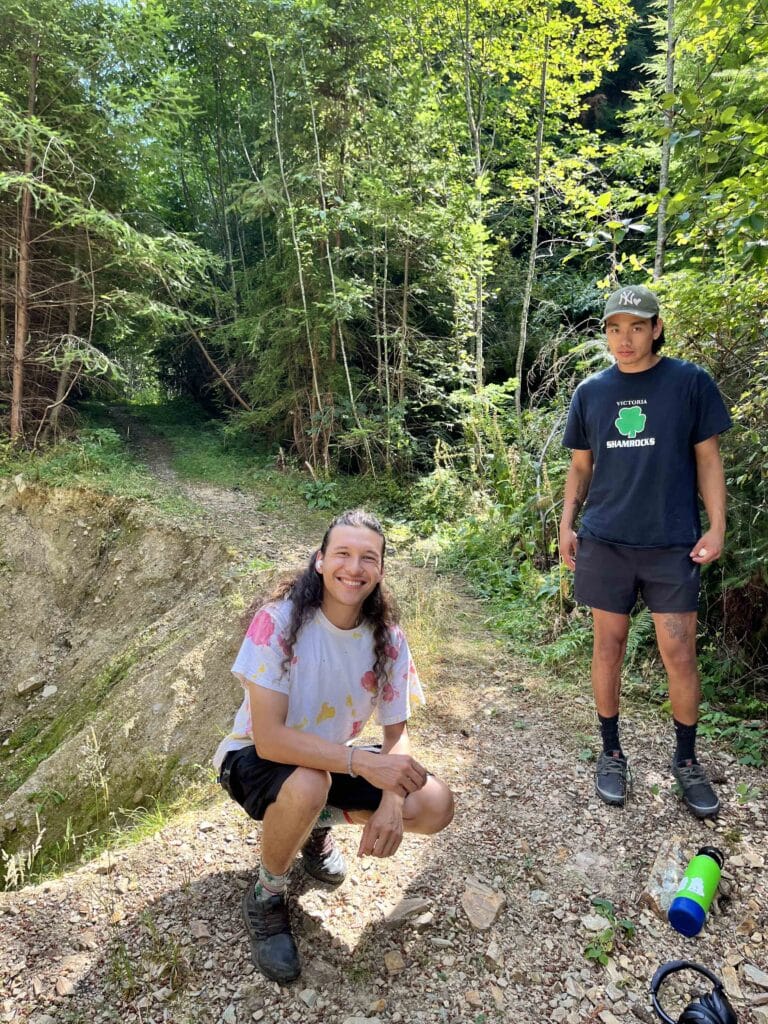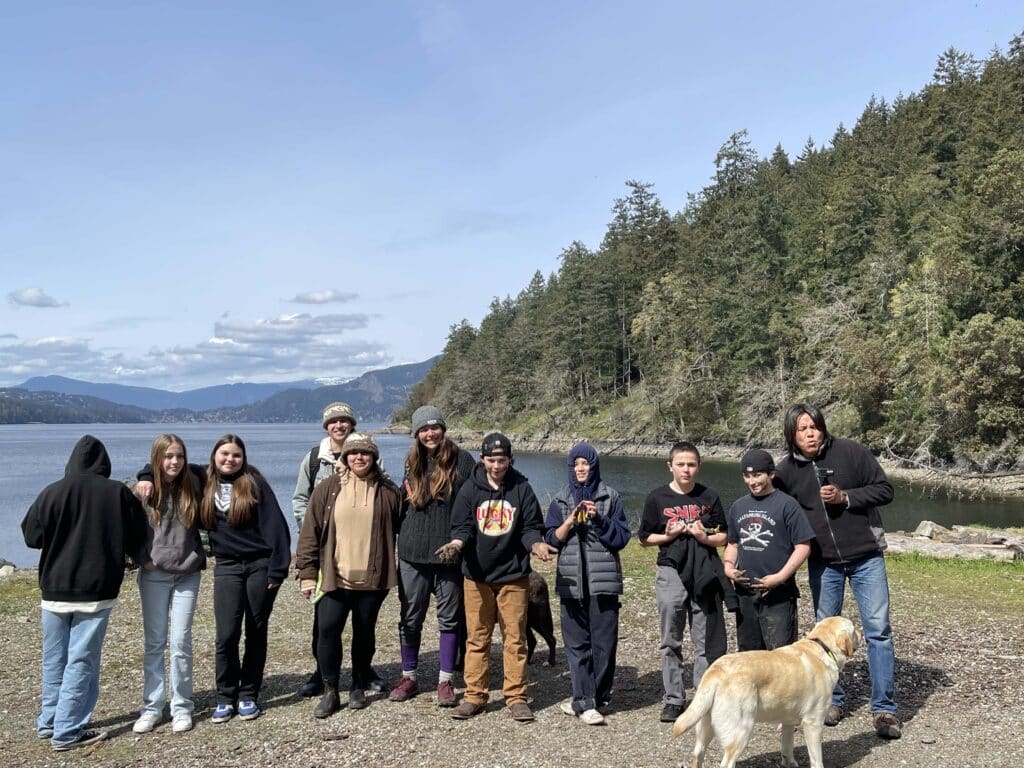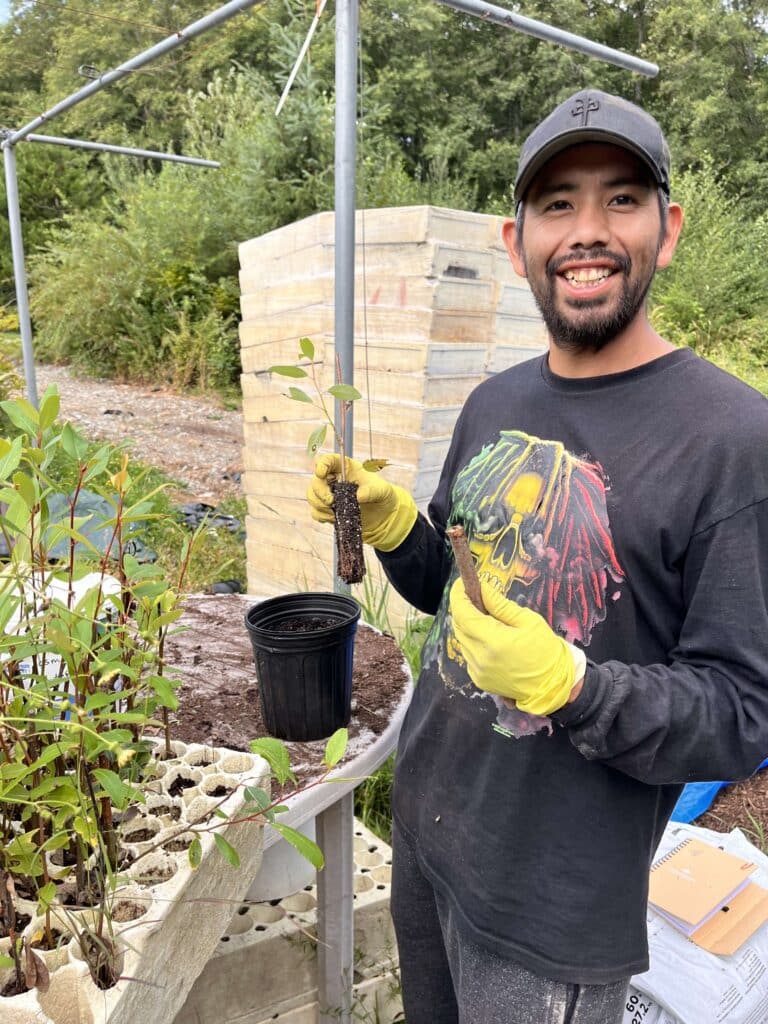About Us
“Fulfilling, magical, and healing,” that is how Stqeeye’ Learning Society co-creator Sulsameethl George and her granddaughter Maiya Modeste describe their work. They come from a family legacy of looking after Xwaaqw’um lands, however, during contact their ancestral land was stolen and eventually designated a provincial park (Burgoyne Bay Provincial Park on Salt Spring Island). They knew their people needed to get back to the land and continue stewarding it. Stqeeye’ Learning Society carries on the work of their ancestors, and Sulsameethl says that the land calls for her, pulls at her and that their work is “putting the heartbeat back into the land.”
- Stqeeye’ (pronounced STAH-KAY-AH) *Yes it is Hul’q’umi’num’ for wolf.
For the first couple of years, the organization spent a lot of time at Xwaaqw’um, reconnecting with the land, and “learning from the land, intimately.” Maiya adds that the organization grew so much in those first few walks in their village and archeological sites. Xwaaqw’um is 564 hectares of land, and Sulsameethl believes the land needs to be tended in their ancestor’s time-tested and proven methods. That work should include fire as a way of controlling invasive species and restoring their ecosystems, an ancestral practice that Sulsameethl would like to see return. In the past several years, Stqeeye’ Learning Society focused on the restoration of wetlands, with four areas of wetlands complete. The program will continue to create 20 more hectares in the next five years.
- Xwaaqw’um: Located in the heart of Quw’utsun (Cowichan) Territory, Xwaaqw’um lies across from Hwtl’upnets (Maple Bay) in Sansum Narrows, a stretch of ocean separating what is now known as Vancouver Island’s eastern coast and Salt Spring Island.
Maiya, the P’hwulhp Restoration Project Coordinator, runs the food restoration program, where she researches Garry Oak ecosystems and plants a native food garden all to continue to fortify their food sovereignty. The food restoration program harvests traditional plants, and Maiya’s goal is to “preserve them, prepare them, cook them” to eventually feed their Elders traditional foods.
- P’hwulhp (Garry Oak) meadows contain an abundance unlike any other ecosystem on the west coast. Many of Quw’utsun’s staple foods originate from these diverse ecosystems such as: Speenhw (Camas), Deltoid Balsamroot, nodding onion, hooker’s onion, chocolate lily, tiger lily and acorns to name a few.
Stqeeye’ Learning Society also has a Youth on the Land project where Indigenous youth from local schools do medicine walks alongside the telling of traditional stories on the lands. For Maiya one of the most rewarding parts of this work is the land-based learning program, because it gives the young people the ability to be proud of their heritage. She adds that her favorite part is when she sees the youth light up when they are told these stories, “they look at the land differently because now it’s associated with giants and the spirit of the mountains.”
Sulsameethl says her biggest hope is to see the land return to her people, she is aware it is a process. They are at the beginning of a fundraising campaign to purchase a plot of land that is close to the park, which will allow them to restore part of their traditional village, waterways, and wetlands. Sulsameethl hopes that the acquisition of land means they can set up summer camps, camps for kids, and housing for staff and Elders.
Mission + Vision + Values
The central goal of Stqeeye’ is to strengthen cultural relationships to the land and water at Xwaaqw’um Village (aka Burgoyne Bay Provincial Park) and beyond through:
- delivering cultural and ecological learning opportunities to Quw’utsun, Hul’q’umi’num and other indigenous youth and community;
- fostering reconciliation through the building of cross-cultural relationships, delivering educational opportunities for school groups and organizing cultural gatherings open to the public.




